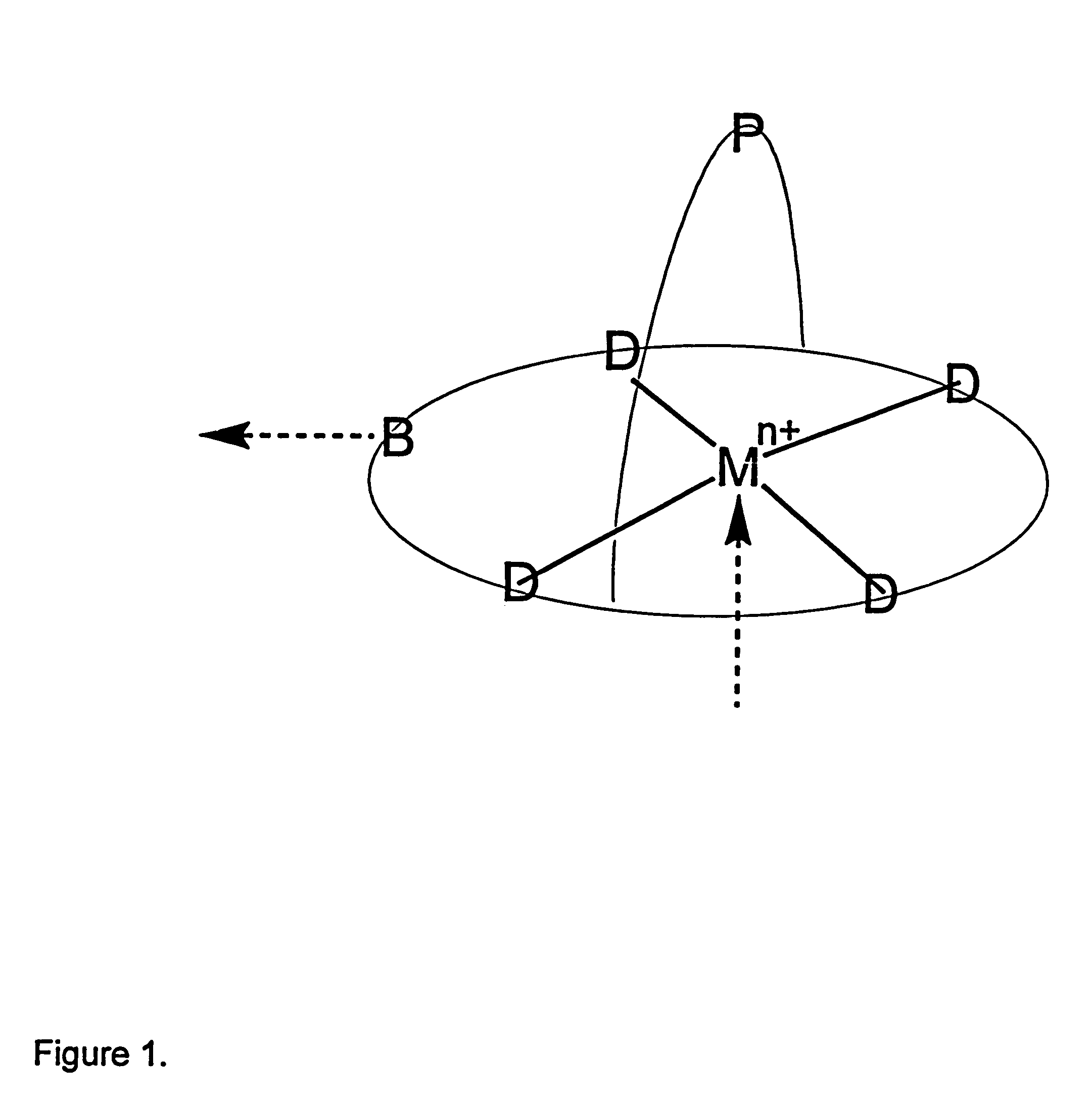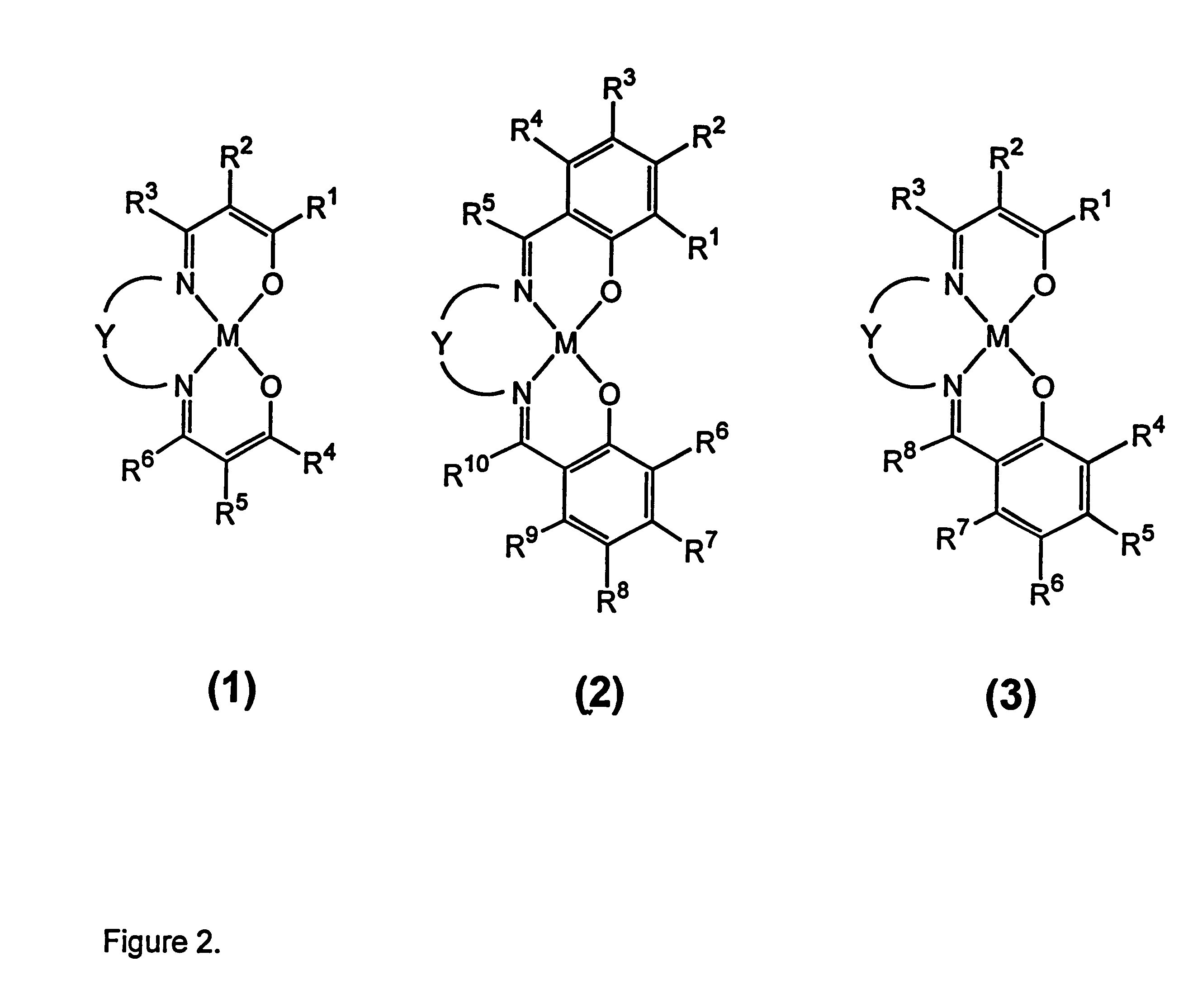Process for separation of oxygen from an oxygen containing gas using oxygen selective sorbents
- Summary
- Abstract
- Description
- Claims
- Application Information
AI Technical Summary
Benefits of technology
Problems solved by technology
Method used
Image
Examples
example 1
Preparation of a TEC Precursor
The TEC precursor was prepared by adding a solution of 3,4-diaminopyridine (1.017 g, 9.32 mmol) in warm ethanol (25 ml) to a mixture of 3,5-di-tert-butylsalicylaldehyde (4.278 g, 18.3 mmol) in ethanol (25 ml). The mixture was heated for 15 minutes then allowed to cool giving a deep yellow solution. A yellow solid was obtained by addition of water to a solution in hot ethanol until the solution began to turn cloudy, cooling, collection by filtration, and drying in air. The mass of solid obtained was 4.66 g. The composition of the isolated solid is consistent with a 1:1 mixture of 3,5-di-tert-butylsalicylaldehyde and its mono-imine with 3,4-diaminopyridine based on .sup.1 H NMR spectroscopy. This material was used in the preparation of the cobalt(II) complex.
Preparation of Co(3,5-di-tert-BusalDAP)
Methanol (50 ml) was added to a mixture of the TEC precursor described above (1.973 g) and cobalt(II) acetate hydrate (0.923 g, 3.71 mmol) within an inert atmosp...
example 2
Purification of Co(3,5-di-tert-BusalDAP)
A sample of Co(3,5-di-tert-BusalDAP) prepared according to the method described in Example 1 and containing sodium acetate was purified by crystallization from toluene within an inert atmosphere enclosure. A sample of the crude material was heated in toluene, filtered hot, then allowed to cool slowly to room temperature. During cooling, a fibrous network of fine crystals was obtained. The solid was collected by vacuum filtration. This sample of Co(3,5-di-tert-BusalDAP) is designated "Example 2".
Subsequent experiments involving heating at 50.degree. C. under vacuum reveal that the isolated solid contains a 25.5 wt. % volatile component believed to be toluene.
Sorption Studies for Co(3,5-di-tert-BusalDAP)--"Example 2"
Average equilibrium data for the Co(3,5-di-tert-BusalDAP) sample designated "Example 2" are presented in Tables 3 and 4. These data were obtained using methods described in preceding paragraphs related to "Example 1". Performance of ...
example 3
Alternative Preparation of Co(3,5-di-tert-BusalDAP)
An alternative preparation of Co(3,5-di-tert-BusalDAP) was performed by metallation of the precursor described in Example 1, but using triethylamine rather than sodium hydroxide as base. A mixture of the TEC precursor described in "Example 1" (2.00 g, 3.57 mmol) was dissolved in methanol (50 ml) then the mixture was filtered to give a yellow solution. Triethylamine (1.0 ml) was added followed by a solution of cobalt(II) acetate hydrate (0.8899 g, 3.57 mmol) in methanol (20 ml). A dark brown solution formed containing solid. The mixture was heated at reflux for 40 minutes then left to cool. The dark solid was collected by filtration then dried under vacuum. The mass of solid obtained was 0.8631 g.
Sorption Studies for Co(3,5-di-tert-BusalDAP), "Example 3"
Average equilibrium data for the Co(3,5-di-tert-BusalDAP) sample designated "Example 3" at 0 and -23.degree. C. are presented in Tables 6 and 7, respectively. These data were obtained...
PUM
| Property | Measurement | Unit |
|---|---|---|
| Mass | aaaaa | aaaaa |
| Pressure | aaaaa | aaaaa |
| Pressure | aaaaa | aaaaa |
Abstract
Description
Claims
Application Information
 Login to View More
Login to View More - R&D
- Intellectual Property
- Life Sciences
- Materials
- Tech Scout
- Unparalleled Data Quality
- Higher Quality Content
- 60% Fewer Hallucinations
Browse by: Latest US Patents, China's latest patents, Technical Efficacy Thesaurus, Application Domain, Technology Topic, Popular Technical Reports.
© 2025 PatSnap. All rights reserved.Legal|Privacy policy|Modern Slavery Act Transparency Statement|Sitemap|About US| Contact US: help@patsnap.com



